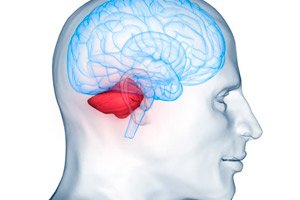
All iLive content is medically reviewed or fact checked to ensure as much factual accuracy as possible.
We have strict sourcing guidelines and only link to reputable media sites, academic research institutions and, whenever possible, medically peer reviewed studies. Note that the numbers in parentheses ([1], [2], etc.) are clickable links to these studies.
If you feel that any of our content is inaccurate, out-of-date, or otherwise questionable, please select it and press Ctrl + Enter.
Discovery of a new role for the cerebellum in thirst regulation
Last reviewed: 02.07.2025

The cerebellum, often referred to as the "little brain," has attracted the attention of researchers for centuries due to its unique structure and cellular complexity, being one of the oldest regions of the brain in evolutionary terms. Traditionally, it was considered only as a motor control center; however, recent studies have shown its involvement in non-motor functions such as cognition, emotion, memory, autonomic function, satiety, and meal completion.
In a recent study in mice published in Nature Neuroscience, researchers from University Hospitals (UH), the Harrington Discovery Institute at UH, and Case Western Reserve University found that the cerebellum also controls thirst, an important function needed for survival. Specifically, the team found that the hormone asprosin diffuses from the periphery into the brain and activates Purkinje cells in the cerebellum. This leads to an increased urge to seek out and drink water.
"Asprosin, a hormone discovered by our lab in 2016, is known to stimulate food intake and maintain body weight by activating key 'hunger' neurons in a part of the brain called the hypothalamus and acts by binding to a protein on the surface of the neuron called a 'receptor,'" said Dr. Atul Chopra, senior author of the study.
Dr. Atul Chopra is an investigator at the UH Harrington Discovery Institute and associate director of the Harrington Rare Disease Program, a medical geneticist on call at UH, and an associate professor of medicine and genetics and genomics at Case Western Reserve University School of Medicine.
The hormone requires a receptor for its action, and in the case of asprosin's ability to control appetite and body weight, that receptor is Ptprd. In addition to the hypothalamus, the team found that it is also highly expressed in the cerebellum, although the functional significance of this was unknown.
"We initially assumed that asprosin action in the cerebellum coordinated food intake with the hypothalamus, which turned out to be incorrect. The breakthrough came when Ila Mishra, a postdoctoral fellow in the lab and now head of her own lab at the University of Kentucky, discovered that mice in which the cerebellum's sensitivity to asprosin was knocked out had reduced water intake. Our ultimate goal was to measure food intake, not water intake, which was a happy accident."
These mice also showed reduced Purkinje cell activity accompanied by hypodipsia (reduced thirst). Their food intake, motor coordination, and learning were unaffected. In contrast, mice in which hypothalamic asprosin sensitivity was eliminated showed reduced food intake with no effect on thirst.
"Our results reveal not only a new function for cerebellar Purkinje cells in thirst modulation, but also their independent regulation from well-established roles in motor coordination and learning," added Dr. Chopra. "It is fascinating that after a century or more of neurobiological research, we are still discovering important new functions for parts of the brain that have long been thought to be understood. The broader significance of this discovery is its potential for the management of thirst disorders such as polydipsia (excessive thirst), hypodipsia, and adipsia, for which there is currently no treatment."
